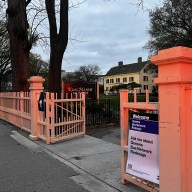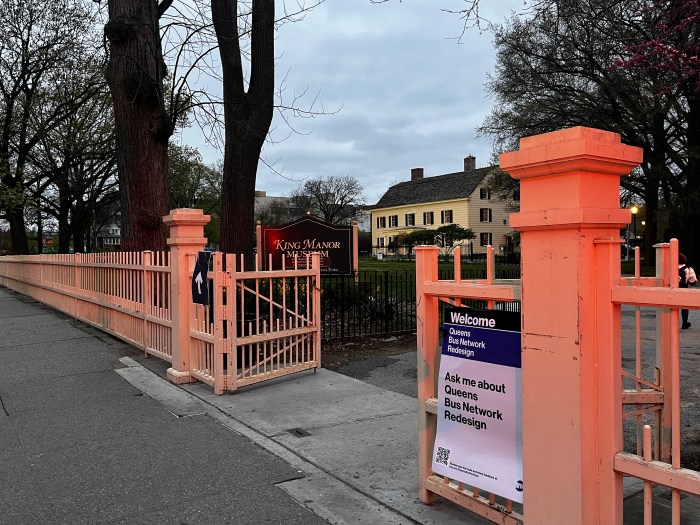By Daniel Massey
E.G. McConnell looked at a photograph of the 761st “Black Panther” tank battalion on display in St. Albans Saturday and pointed to a young man wearing a hat turned to the side.
The young man was McConnell, who is now 76. The cap was crooked in a silent protest against the discrimination blacks faced in the armed forces, he said as he examined the exhibit titled “Men and Women of Color in the Armed Forces” at the 369th Veterans’ Association on Linden Boulevard.
Former Brooklyn Dodger Jackie Robinson was once a part of the 761st and the World War II battalion was the first black armored unit to see combat. But despite fighting for 183 consecutive days from October 1944 to May 1945, inflicting thousands of enemy casualties and liberating more than 30 major towns in six European countries, discrimination was prevalent, McConnell said.
McConnell described how Robinson was court-martialed for refusing to move to the back of a military bus at Fort Hood, Texas. When he once took ill, a general accused McConnell of being inflicted with gonorrhea.
“To show my resentment for this humiliation and discrimination I wouldn’t wear my hat correctly,” he said.
But at least his unit was allowed to see combat duty, McConnell said. The U.S. Army practice at that time relegated blacks to cleaning mess halls and digging ditches.
After years without official recognition for their bravery, members of the “Black Panther” battalion finally received a presidential citation from President Jimmy Carter in 1978.
The exhibit, organized to coincide with Black History Month, showed how blacks have managed to overcome obstacles and make significant contributions to the U.S. military.
“People forget the contributions blacks have made to this country,” said Reuben Holder, a member of the 369th Veterans’ Association and one of the event’s organizers. “This event is to let our children know we have contributed to this country in every way.”
One section of the exhibit explained how the 369th Infantry Regiment of the New York National Guard was assigned to dock work and other unskilled labor by Gen. John Pershing because he refused to lead black soldiers in combat.
“They wouldn’t give them guns. They wouldn’t give them ammunition,” said veteran Louis Harper, who joined the New York National Guard in 1939, as he examined a collage of memorabilia. “They sent them overseas to be cooks and ditchdiggers, but the French said ‘give them to us.’”
The French drew no color lines and the 369th, which is the ancestor of the St. Albans Veterans’ Association, fought in French uniforms and under the French flag in World War I.
They did not lose a single trench and never lost an inch of ground, earning the nickname “The Harlem Hellfighters,” after the hometown of many of the fighters. The 369th received more than 170 awards for bravery from the French government, including the Croix de Guerre, a high French decoration for valor.
In addition to the stationary exhibits of photos, diagrams and books, a mobile exhibit of the 555th Parachute Infantry Battalion, nicknamed the “Triple Nickels,” added to the history on display: members of the Army’s first all-black parachute battalion were on hand to offer their memories.
The “Triple Nickels” never saw combat overseas, but made more than 1,100 jumps to put out forest fires the military claimed were set by the Japanese, said Clarence Bevis, a 555 veteran.
Bevis, 71, said the “Triple Nickels” were instrumental in opening the door for blacks to become paratroopers.
Meanwhile, veteran Eugene Jordan sat at a table gathering information from people like Bevis to ensure the history that filled the St. Albans hall would last beyond the Saturday celebration.
“There’s one guy here who’s 90 years old,” said Jordan, who was collecting memories for the Library of Congress’ Veterans History Project. “This history is being lost. Fellows are passing on.”
Reach reporter Daniel Massey by e-mail at Timesledger@aol.com or call 229-0300, Ext. 156.































